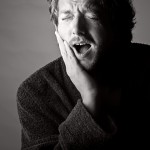
Temporomandibular disorders (TMDs) comprise a group of clinical problems that involve the masticatory muscles, the temporomandibular joint and associated structures, or both. They may also involve many organic, psychological and psychosocial factors. The aetiology of TMDs is still not clear.
The aim of this Cochrane review was to assess the effectiveness of arthroscopy for the management of signs and symptoms in patients with TMDs.
The following databases were searched; The Cochrane Oral Health Group Trials Register , the Cochrane Central Register of Controlled Trials (CENTRAL), MEDLINE, EMBASE , LILACS , Allied and Complementary Medicine Database (AMED) , CINAHL . In addition reference lists of the included articles were checked and handsearching of a number of journals was conducted. There were no restrictions regarding the language or date of publication.
Randomized controlled clinical trials of arthroscopy for treating TMDs were included. Date being extracted independently by two review authors, with three review authors assessing risk of bias. Authors of the selected articles were contacted for additional information.
They included seven trials (involving 349 patients) that were either at high or unclear risk of bias.
They found:-
- The outcome pain was evaluated after 6 months in two studies. No statistically significant differences were found between the arthroscopy versus nonsurgical groups (standardized mean difference (SMD) = 0.004; 95% confidence interval (CI) -0.46 to 0.55, P = 0.81).
- Two studies, analyzed pain 12 months after surgery (arthroscopy and arthrocentesis) in 81 patients. No statistically significant differences were found (mean difference (MD) = 0.10; 95% CI -1.46 to 1.66, P = 0.90). Three studies analyzed the same outcome in patients who had been submitted to arthroscopic surgery or to open surgery and a statistically significant difference was found after 12 months (SMD = 0.45; 95% CI 0.01 to 0.89, P = 0.05) in favour of open surgery.
- The two studies compared the maximum interincisal opening in six different clinical outcomes (interincisal opening over 35 mm; maximum protrusion over 5 mm; click; crepitation; tenderness on palpation in the TMJ and the jaw muscles 12 months after arthroscopy and open surgery). The outcome measures did not present statistically significant differences (odds ratio (OR) = 1.00; 95% CI 0.45 to 2.21, P = 1.00).
- Two studies compared the maximum interincisal opening after 12 months of postsurgical follow-up. A statistically significant difference in favour of the arthroscopy group was observed (MD = 5.28; 95% CI 3.46 to 7.10, P < 0.0001).
- The two studies compared the mandibular function after 12 months of follow-up with 40 patients evaluated. The outcome measure was mandibular functionality (MFIQ). This difference was not statistically significant (MD = 1.58; 95% CI -0.78 to 3.94, P = 0.19).
The authors concluded:-
Both arthroscopy and nonsurgical treatments reduced pain after 6 months. When compared with arthroscopy, open surgery was more effective at reducing pain after 12 months. Nevertheless, there were no differences in mandibular functionality or in other outcomes in clinical evaluations. Arthroscopy led to greater improvement in maximum interincisal opening after 12 months than arthrocentesis; however, there was no difference in pain.
Rigon M, Pereira LM, Bortoluzzi MC, Loguercio AD, Ramos AL, Cardoso JR. Arthroscopy for temporomandibular disorders. Cochrane Database Syst Rev. 2011 May 11;5:CD006385. Review. PubMed PMID: 21563153.
